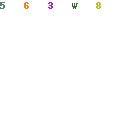If you are planning on becoming a musician worth the cover charge or download price, it is fairly important to be able to tell the other instruments from yours in a mix. What is the role of the rhythm instruments? What is the connection of the harmony and melody? For folks with whom you want to experience your music on a personal and long term level, knowing more about the ingredients is the best way to satisfy them and have them return for more.
In my own mountain climbing journey in comprehending patterns and frequency I was met by a music sherpa by the name of Mr. John Trygar. JT is remarkable in the fact that he is tuned to his world of music in a way that he can share anything you need to know to anyone of any music experience without being pedantic, insincere or talking down to you. He was just enthusiastic and passionate to share what he had learned over the years as a working musician, business owner and aficionado. As a young cat bitten by the electronic music bug, I really wasn't aware of all the other faces of the mountain assent that included jazz, early blues and historic R&B artists and their great music. JT provided me with a world class education on the basics of melody, harmony and especially the role of each instrument in a recording that means that the whole is greater than the sum of its parts. JT facilitated his lessons based on a ginormous collection of vinyl records that covered almost everything that was worth listening to in the last 100 years. From arcane recordings to collections that followed one musician through a progression of recordings and different groups.
Freely giving his time each evening after closing his music store, he tirelessly prepared listening exercises that tuned an ear to one specific set of frequencies generated by a single instrument. Once I could hear what the bass and bass drum were doing, we went up the frequency range to understand the relational values of tonal ranges and colors that made a saxophone different from a violin, the human voice from a harmonica, the tom toms from a conga and so on. Even after taking professional courses in audio engineering, nothing beat JT's easy going way of hearing and listening which broadened my understanding and enriched my musical life. Jt was able to bring the theory and the music to life in a way that the audio engineer could not. Their approach was a sterile, laboratory produced set of logic circumstantial evidence of why frequencies oscillated. JT shared why these tones made us feel the music deeply and passionately. JT gave me the reason for becoming a musician, the school gave me a reason not to be an engineer.
Bringing music to life as a dimensional and spiritual essence is no easy task, yet JT could relate that kind of abstract in his blue collar, laid back manner. His humble yet powerful was of relating the how and why of frequencies and feeling, sine waves and soul, headroom and humor made it one of the great joys of my life.
JT is still just as passionate today as he was those many years ago which tells me that he is and was always rooted in his love- that's just who he is. Hats off JT for all you have done for me. Each time I appreciate a new piece of music or a new musician or group, I have one person to thank. I hope I can freely give someone else this kind of gift and pass it on.
Monday, August 4, 2008
JT and the Separated Frequencies
Subscribe to:
Post Comments (Atom)





No comments:
Post a Comment